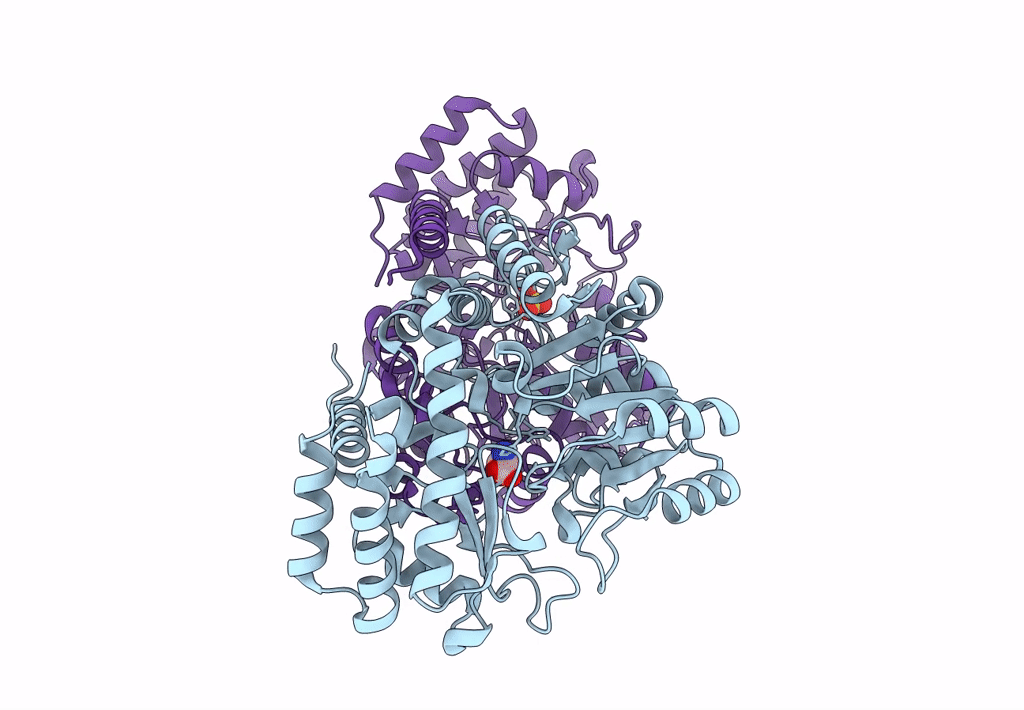
Deposition Date
2023-05-09
Release Date
2023-08-16
Last Version Date
2023-11-15
Entry Detail
PDB ID:
8SSY
Keywords:
Title:
Room-temperature X-ray structure of Thermus thermophilus serine hydroxymethyltransferase (SHMT) bound with D-Ser in a pseudo-Michaelis complex
Biological Source:
Source Organism:
Thermus thermophilus HB8 (Taxon ID: 300852)
Host Organism:
Method Details:
Experimental Method:
Resolution:
1.80 Å
R-Value Free:
0.16
R-Value Work:
0.13
R-Value Observed:
0.13
Space Group:
P 1 21 1


